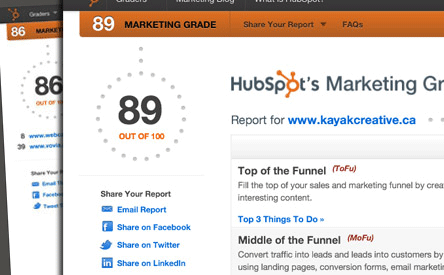Why Showing Beats Telling in Social Media
Recently, I shared a strikingly simple but elegant concept I picked up from Social Shake-Up in Atlanta, Human-to-Human or (H2H) communication from Bryan Kramer. Today, I’d like to give you another that really stuck out in my mind: showing beats telling.
This is something a lot of us have heard before in our lives, starting with grammar school lessons on description and continuing through our careers as business marketers. Today, though, it’s especially relevant because of that big topic – authenticity – that is becoming so important in the way we communicate with our connections and followers.
If we think of telling as what we say, and showing as what we actually do, then it’s pretty clear why: In the world of social media, telling is virtually useless because everyone does it; showing, on the other hand, accomplishes more because it sets us apart.
When connections see us talking about what we can do for them or why they should work with us over and over again, we come across as pitchmen (and women), and lazy ones at that. On the other hand, when we use social channels to actually show care, concern, and participate in authentic interaction, the dynamics are quite different. Rather than boasting about customer service, we’re actually doing it; instead of talking about the knowledge we have, we’re sharing the information with everyone so they can benefit from – and build upon – it.
How Do We Show Instead of Tell?
Showing is really about social proof and building our credibility on a personal and company level. As a result, there are some pretty easy ways to keep ourselves on task:
Focus on doing things, over issuing platitudes. If you catch yourself bragging on social media, or issuing vague statements that don’t tie into anything in the real world, then you aren’t showing. While talking up accomplishments is all too human, your focus should be about generating action, in the form of positive outcomes for other people, over of enhancing your marketing position.
It might seem ironic, but it’s true: The more you encourage clients to do it themselves, and simply look to you for guidance, the easier it is for them to make the decision to choose you over competitors – because you empower them.
Know the difference between social monitoring and listening. There are certain kinds of marketers who will only write on a subject, or comment about it, if they think it’s going to be popular. These are the ones who are always chasing the next “viral” piece of content, and are more interested in crowds than individuals.
That kind of social monitoring is interesting, if it keeps you plugged in to what’s going on in the world around you, but it should take a backseat to authentic listening. In other words, care about what people are trying to tell you, not just where all of the noise is, because those one-on-one relationships have more value than short-lived buzz.
Make every interaction consistent. Social interaction should be an enterprise-level event, meaning that involving multiple people at multiple layers in your organization creates a larger impression than an individual ever could have. Having lots of different voices and perspectives is a great way to show you care and that you “get it.” Issuing posts and updates that read like press releases isn’t.
Consistency in your social interactions means being involved and authentic, not necessarily that everyone is working from the same script. You want people to feel like they’re communicating with individuals, not getting one tightly packaged message after another. Not convinced? Have you ever called an overseas support line?
The Bottom Line on Show Vs. Tell
When it comes down to it, showing versus telling reinforces the reality that actions speak louder than words. Some business marketers and their organizations think they can hide that on social media, where they think people only see snapshots and updates, but the reality is that it just makes your level of attention and lack of engagement all the more transparent.
It’s always easier to tell, and to be an average marketer. But if you can show connections that you’re truly authentic, and that you care about helping them, the benefits build in a way that simple social posting can never aspire to.
If you’re curious, the full Social Shake-Up 2014 schedule of speakers is here, and Bryan Kramer here.
{{cta(‘7bddf774-979c-4867-82da-5615f1966395’)}} {{cta(‘ab2f54c9-130d-474d-b1fd-2f642e788b86’)}}






